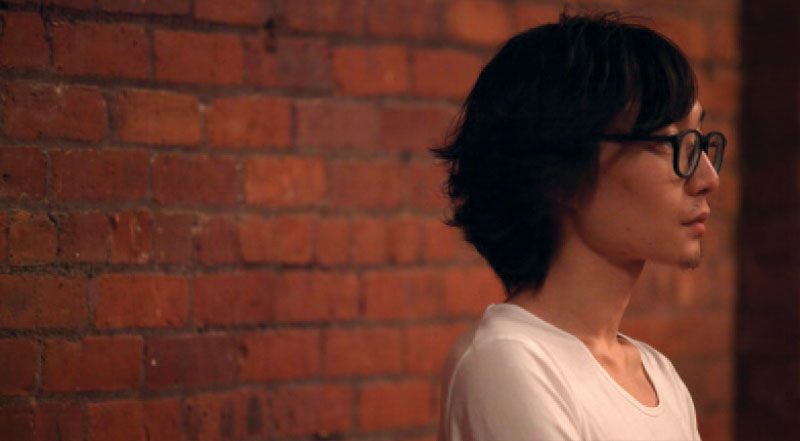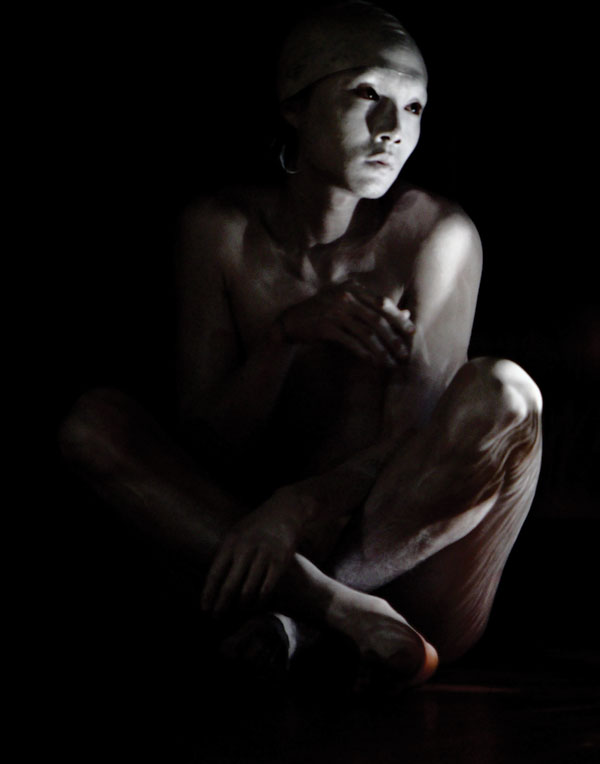Dancing the Brushstrokes

Watson Fellow Cheng Peng ’12 connects traditional Chinese painting with modern dance
Cheng Peng is creative with a capital C. He started painting when he was 3 years old, learned to play the piano at 10, and started a rock band at age 16.
The summer before college, Peng discovered the work of the Taiwanese group Cloud Gates, the first modern dance company in the Chinese-speaking world and the first modern dance company to incorporate Tai Chi and other kinds of traditional Chinese body disciplines into their work. He was greatly inspired. “They made me realize that you can dance without dancing ballet,” Peng recalls.
For Peng, who grew up in Beijing and came to the United States at age 18, dance was one of the few modes of creative expression he had not tried, until he met Associate Professor of Dance Kathy Wildberger at Vassar. She encouraged him to try a dance improvisation class, and he was hooked.
“When you do that for the first time, you experience a body ecstasy and you feel so freed,” he recalls. “You feel like an animal and your body wakes up. It’s a kind of freedom that I never enjoyed before.” Peng says that as a student in China he was subjected to a lot of “body discipline,” with strict instruction on how to sit properly or even how to raise his hand to ask questions.
The Asian Studies major has been exploring how Asian painting traditions relate to body traditions, since taking the course Art of China, taught by Assistant Professor of Art Karen Hwang-Gold in 2010.
Peng has learned that “There are two kinds of presences of the artist within the painting—especially in landscape painting. The landscape is not only a depiction of nature, of reality, it’s integrated into the artist and then reconstructed to express certain kinds of ideas or emotional sentiments, or used as political commentaries.” But the brush, he says, captures the painter’s physical movements and the flow of his energy on the paper. It is the physical presence of the artist in the painting.
He notes that, “In both the artist’s brushstrokes and in dance, movement is the most important criterion.” That is how he came to tie Asian landscape painting to modern dance.
Peng brought the two together in “Landscape Beyond the River,” a dance performance he presented at Vassar this past spring. The piece featured Peng (the choreographer) and several student dancers performing movements inspired by traditional Chinese landscape paintings and influenced by the artist’s own feelings about nature.

Such complex intellectual and artistic explorations are, no doubt, what captured the attention of the 2012-13 Thomas J. Watson Fellowship committee. Peng is one of only 40 students selected for the fellowship from among 700 applicants from liberal arts colleges and universities across the country. Fellows will each receive $25,000 to support a “dream year” of independent study and experiential international learning.
During his Watson year, Peng will travel to Europe, Southeast Asia, and Taiwan to work with choreographers who integrate Asian body traditions into modern dance. He’ll study with Japanese butoh dancers in Berlin and Paris; with the London-based Akram Khan Dance Company, which melds traditional Indian Kathak dance with contemporary forms; with the Nyoba Kan Butoh Company, a Malaysian group that combines butoh, qigong, and yoga; and at a butoh school in India. In Taipei, he’ll even get to work with Cloud Gates—the group that first piqued his interest in dance.
Over the course of the year, he’ll also observe the effect that globalization is having on Asian dance. “In Taiwan, modern dance itself is a foreign form of art,” he says. “I will be focusing a lot on what kinds of strategies dance companies are using to promote this still quite new kind of art to Asian audiences and on the responses we get from the audiences.”
Last spring, he got to see firsthand how Western audiences responded to Asian traditional dance when he performed a series of impromptu butoh dances on campus. One was done outside. It was a nice day and people were reading on the library lawn when he and a friend surprised them by partially disrobing and painting themselves white. At first people were “freaked out” by the slow-moving ghostly performers, says Peng. “But we danced for an hour and lots of people stayed through the whole thing. I think people liked it. And we really enjoyed it because by dancing in that environment you feel so connected to the air, to the sunshine, to the nature around you, and also to the audience. It’s like we were dreaming together…that kind of feeling.”
It’s a feeling Peng hopes to foster throughout his Watson year.
